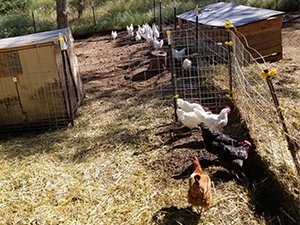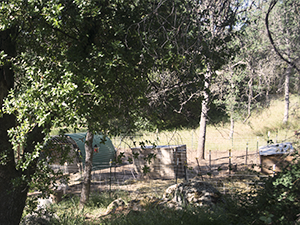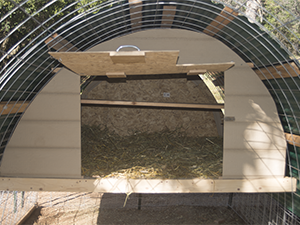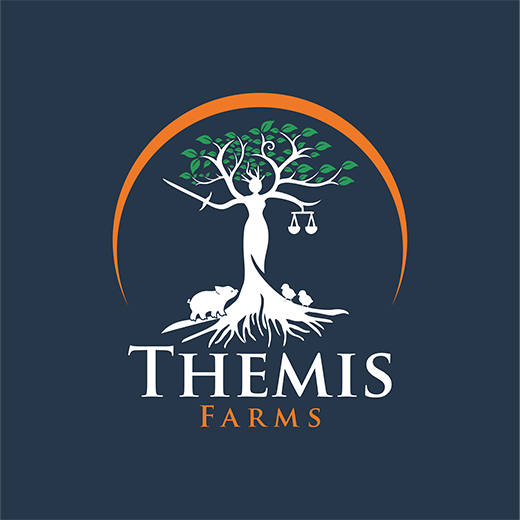


Raising Pigs and Chickens Together
UPDATE
Our companion farming endeavor is a huge success! The chickens handle the poop by picking through it for any undigested grains. The rest gets scratched and scattered around the pen. The flies don’t have a chance to use the pile to create larvae. As a result, the fly population is way down. There is also low to no odor at all. Anytime there is a moist area, we toss a flake of hay to absorb it. We’re very happy with this project!
One of the many things we’ve learned about raising our own livestock is they poop — a lot. And with poop comes flies — a lot of flies. Unless you resort to chemicals, you’ll need a method to control them.
One method is high-frequency rotational grazing. The downside with this method is that you will need a very large acreage. And even with a large acreage, pigs will usually destroy much of the vegetation before they eat it. They love to root through soil.
Another method is using things like fly sprays, fly traps, etc. We don’t want to use chemical sprays or traps that use chemicals. So we use Dr. Bronner’s in a spray bottle attached to a hose to spray the flies. We love natural methods to solve natural problems, but truth be told, our natural recipe does not work as great as its chemical counterpart.
Yet another method for controlling flies is referred to as manure management. This can be accomplished through regular clearing, mounding the manure to create compost, spreading the manure, or dragging the pasture (which requires large machinery).
Joel Salatin offers a different spin on manure management. In the winter, his cows deposit manure on a “giant carbon diaper”, layered with hay and other materials. In the spring, the pigs move in, root around, and aerate the lot. For a detailed description of his Polyface Farm operation, check out this article from The Atlantic, “Inside Polyface Farm, Mecca of Sustainable Agriculture”.
We don’t have cows or a large shed or barn to employ the Polyface method. We pile hay on top of the pig manure to control flies and odor, but we wanted to do more.
Our Companion Farming Program
In the spirit of Salatin’s method, instead of cows, we considered chickens to accomplish a similar outcome. The chickens will dig through the pig manure and eat undigested grains, bugs, larvae, and other parasites. The constant scratching, overturning, and spreading will also help to aerate the pile of hay and manure. And this should expedite the drying process.
So, we constructed a hoop coop inside the pig pens to raise some of our chickens with our Berkshire pigs. Our goal is to control our manure-related smell and disease without costly fertilizer, machinery, or buildings. I read somewhere that 2-3 chickens can get plenty to eat from just one pig’s manure/hay pile!
